5. Prince of Persia: The Sands of Time
What it was: The original Prince of Persia games were the 2D progenitors of series like Tomb Raider and Assassin’s Creed, focused on climbing, acrobatic exploration and (increasingly more often, as the series went on) fighting. The first game was relatively simple; the nameless Prince had to escape from a trap-filled dungeon in 60 minutes, or his Princess was going to be forced to marry some creepy old vizier. Its sequel was considerably more epic, sending the Prince on a long journey to acquire supernatural powers and rescue the Princess once again, but it held true the same basic formula of 2D running, jumping, climbing and fighting.
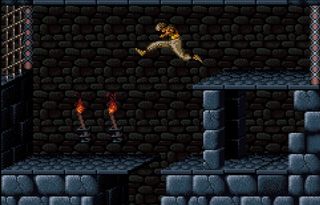
Above: It also looked a little different on every platform. This here's the SNES version
Then the series went 3D in 1999, and where the Prince had once inspired Lara Croft, it now seemed the reverse was true. Rigid 2D climbing was replaced with rigid 3D climbing, and control and camera problems marred the whole experience. A Dreamcast port fixed most of its problems, but it was too late; Prince of Persia had fallen out of favor, and the series as we knew it passed into obscurity.
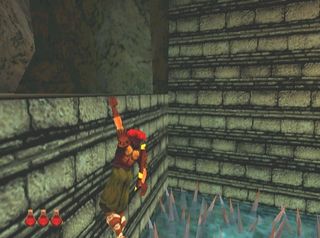
What it became: Four years after Prince of Persia 3D, PoP creator Jordan Mechner teamed with Ubisoft Montreal to reboot the series as something completely new. Now intensely character-driven and centered around a time-travel theme, Prince of Persia: The Sands of Time introduced acrobatic parkour and group combat to the series, creating something that felt much more flexible and organic than its predecessors. It also added what quickly became the series’ most indispensable signature move: the ability to rewind time, neatly erasing any stupid platforming mistakes you’d made – provided, of course, that you had enough magic sand.
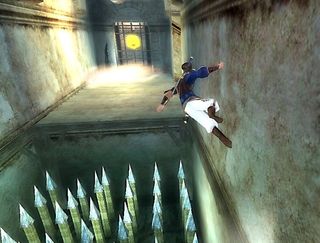
In spite of being squeezed out during the legendarily overcrowded 2003 holiday season, The Sands of Time rapidly found an audience, becoming one of the most beloved games of its time. It was soon followed by two somewhat disappointing sequels, Warrior Within and The Two Thrones, which introduced M-rated brooding and a whip-wielding alter ego, respectively. It didn’t matter what anyone said, though; in fans’ minds, this was now the Prince of Persia, and the originals were quickly forgotten. Not even another attempted reboot in 2008 could shake the faith, judging by the way the series went back to the well two years later with respectable Sands of Time interquel The Forgotten Sands (which nobody played, but still).
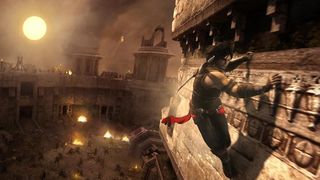
4. Resident Evil 4
What it was: Resident Evil was a pioneer of the “survival horror” genre, and it probably had a lot more to do with establishing the mainstream popularity of zombies than anyone’s willing to admit. Focusing on a zombie outbreak in and around the fictional, remote-but-improbably-large Raccoon City the first few games were masterfully directed (if unapologetically cheesy) works of suspense that forced players into confrontations with zombies and other monsters in dark hallways and cramped spaces seen from paranoid angles. In addition to creating a general atmosphere of dread punctuated by sudden scares, the first few Resident Evils successfully blended the exploration and inventory management of old-school adventure games with zombie-shooting action and then-amazing production values, making them huge hits.

By the time Code: Veronica was released in 2000, though, the luster had started to wear off. The tank-like controls felt increasingly awkward and outdated with every new game, and the scares – summed up by Penny Arcade as “Monsters will come through windows” – were getting predictable and silly. The 2002 GameCube remake and its subsequent prequel the same year brought a new level of moody realism to the franchise, but underneath were the same clunky old mechanics. Clearly, a far more dramatic change was needed.

What it became: If “old” Resident Evil was about plodding exploration and cheap scares, then “new” Resident Evil was about fast action, horrific deaths and a constant, almost claustrophobic feeling of being uncomfortably close to danger. In Resident Evil 4, the dynamic camera angles were switched out in favor of a comparatively narrow, over-the-shoulder view; the zombies were traded in for more nimble, eerie foes called Ganados; and where cutscenes were once a respite from the action, they could now turn deadly at a moments’ notice.

In RE4, Resident Evil was reborn as a genuinely tense, nerve-wracking experience, and it was the scariest – and the best – the franchise had been in years. Its formula quickly became standard for third-person shooters, and continued in RE5, which (in spite of being a pretty great action game) kind of forgot to be scary. (Hopefully, the upcoming Revelations will get the series back on track.)

3. Metroid Prime
What it was: The original Metroid games were quasi-open-world side-scrollers that tasked players with exploring huge, mostly subterranean alien worlds filled with monsters and areas that were only accessible once you’d found a specific gadget or weapon. By Nintendo standards, they were incredibly dark and moody, and that – in addition to their clever design, wealth of hidden items and nagging urge to “hundred-percent” them - helped make them some of the best-loved games in the company’s stable, with 1994’s Super Metroid in particular still regarded as one of the best games of all time.
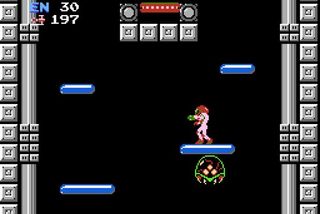
Sadly, Metroid didn’t really enjoy the same popularity in Japan that it did in the US. After its creator, Gunpei Yokoi, left Nintendo in 1996 and died the following year, it looked as though Metroid might be over. And for eight years after the release of Super Metroid, it basically was.

What it became: Outside of maybe The Wind Waker’s cartoon Link, it’s difficult to think of a Nintendo announcement that drew more knee-jerk rage from fans than the one that told us that Metroid – sacred, thoughtful Metroid – was going to come back as a first-person shooter, made by an untested studio in Texas. It seems silly to doubt it now, but back then Retro’s plan to make a Metroid FPS seemed like a slap in the face to fans. How would Samus’ gadget-driven exploration even work in first-person? How could a shooter possibly recapture any of what had made Super Metroid great, eight years previous?

As it turned out, the answer was “beautifully.” Metroid Prime didn’t just get Metroid’s formula right – it added layers of complexity and depth that weren’t possible on 8- and 16-bit machines. It offered players a huge open world to explore, and filled that world with interesting things to do and background information that could be scanned from just about everything. It was everything a modern Metroid should be, but at the same time it was something entirely new, and it resonated strongly enough to spawn three sequels and a pinball game. (And if it still wasn’t enough for the most stubborn old-school fans, well, it's worth noting that Metroid Fusion, the “true” sequel to Super Metroid, shipped at the same time.)

